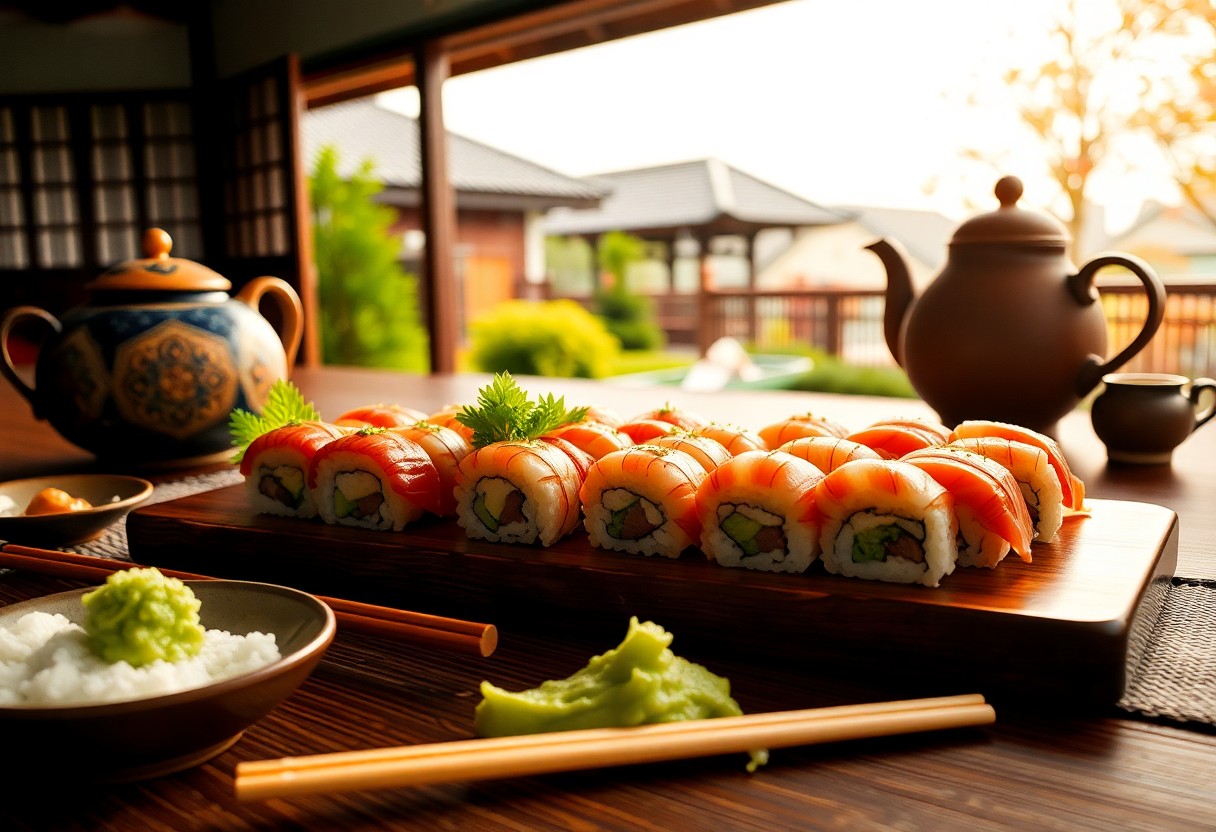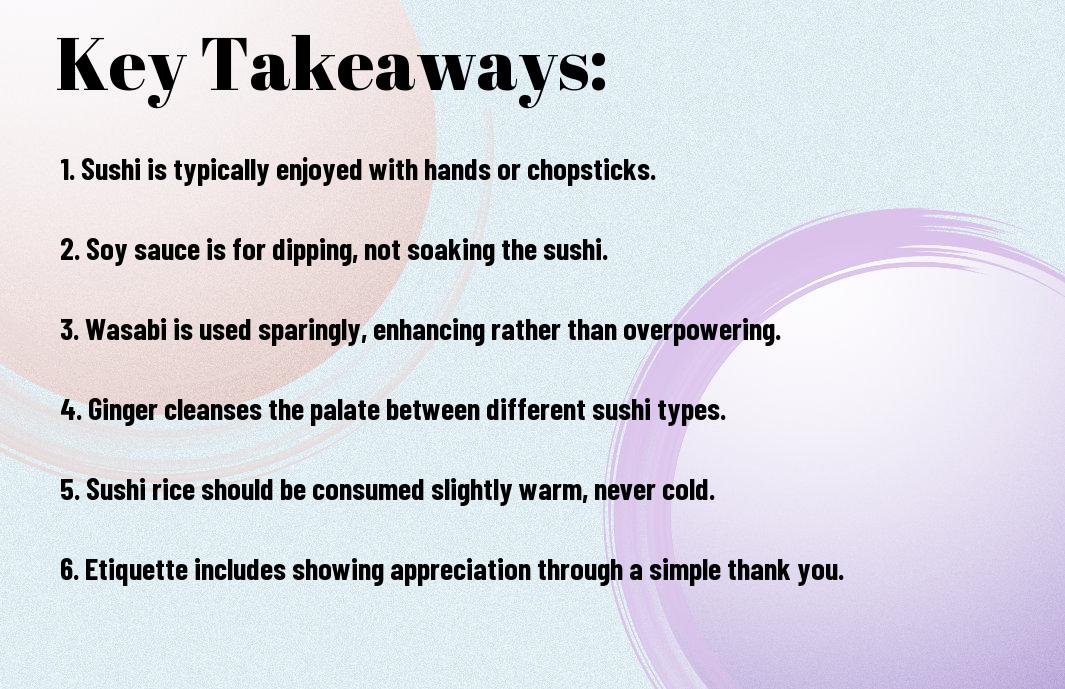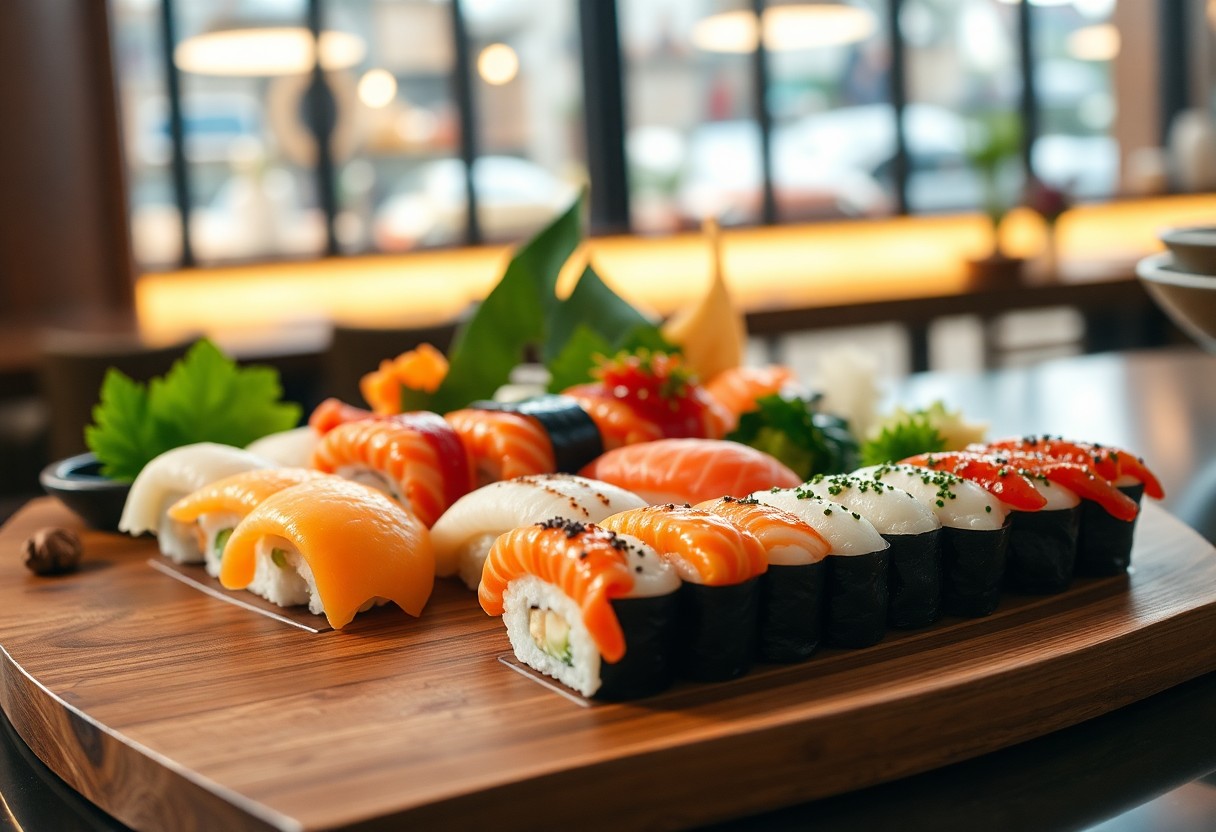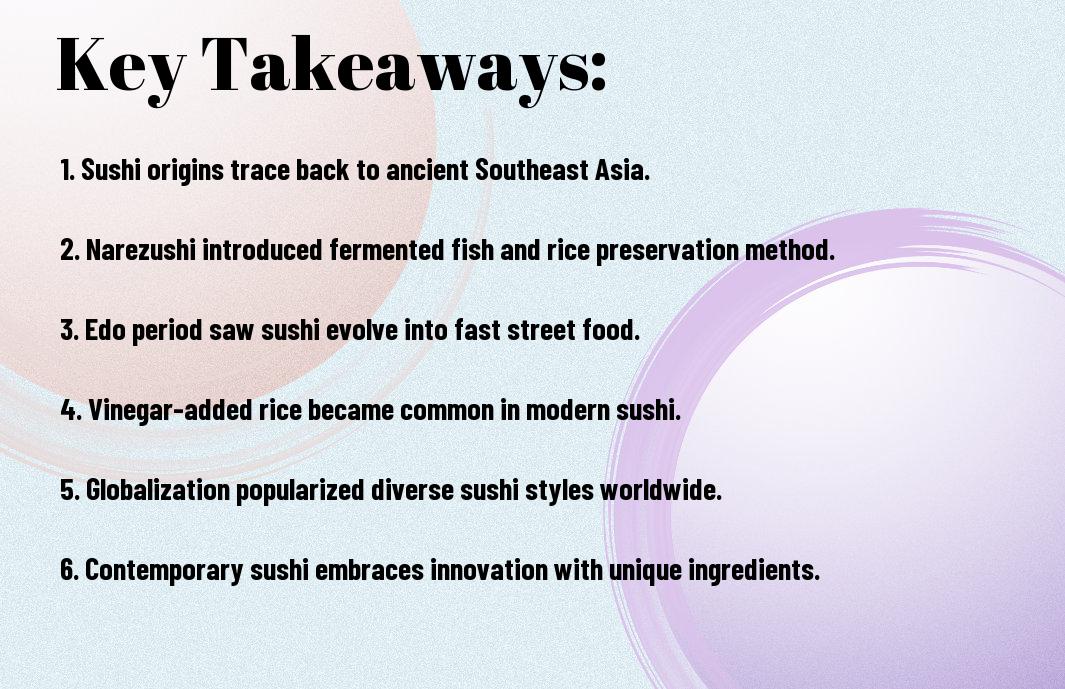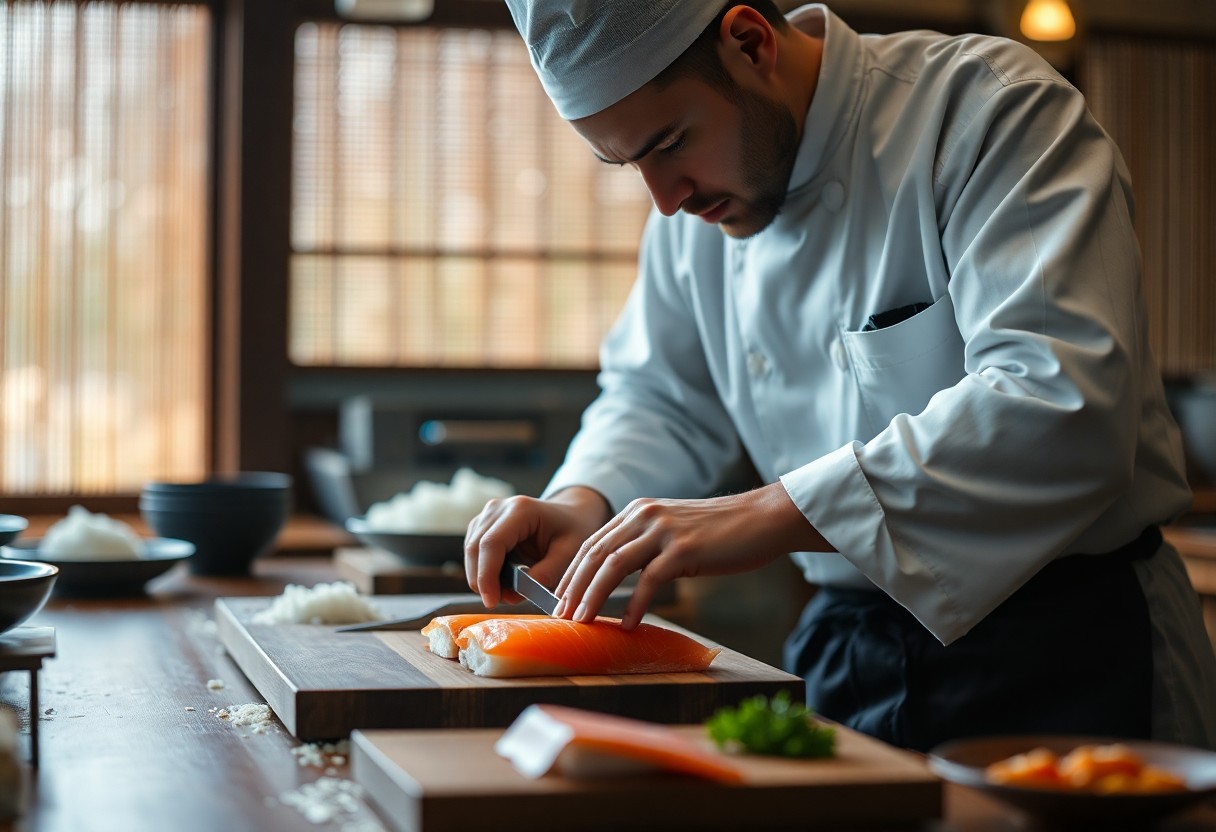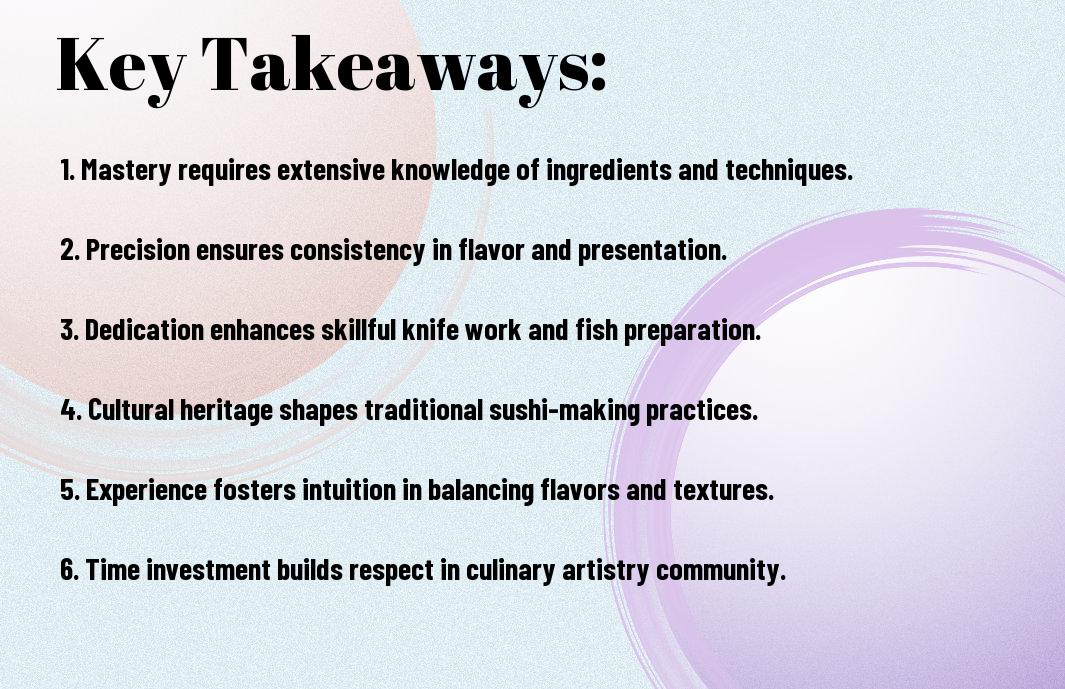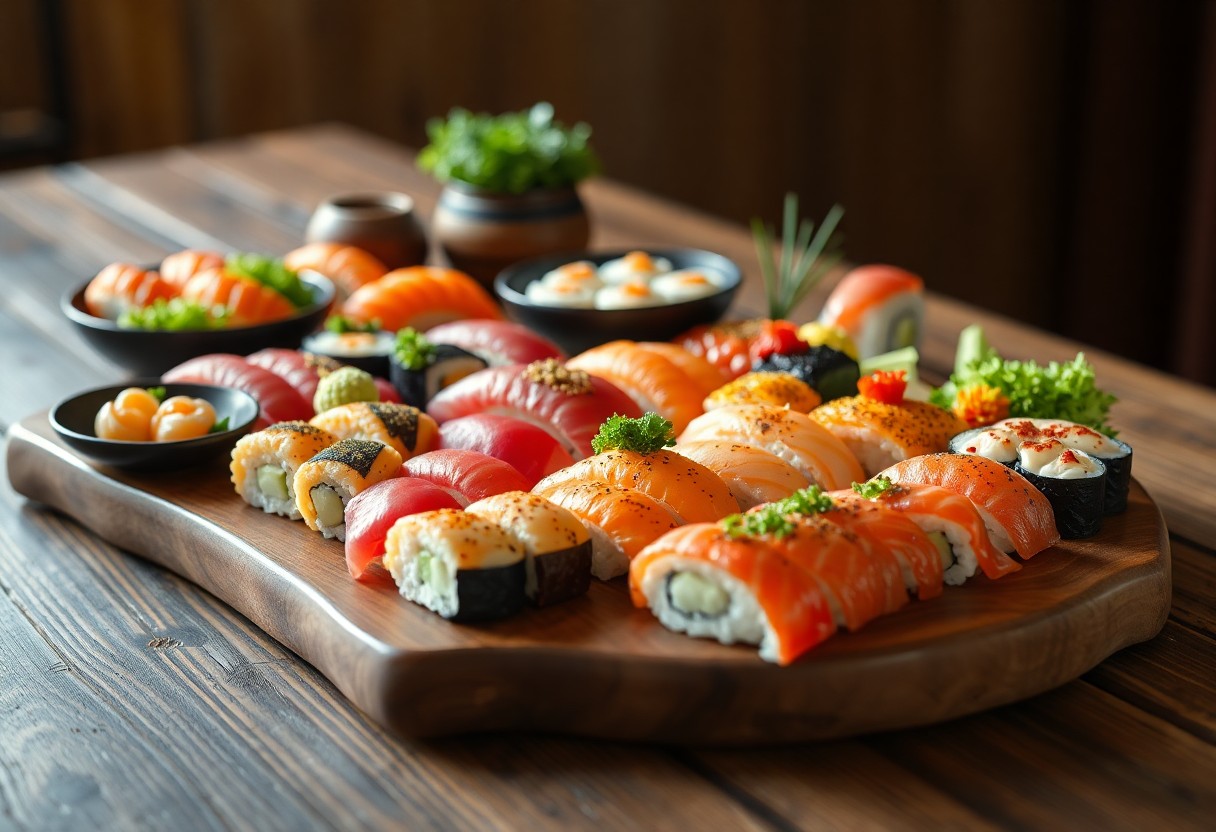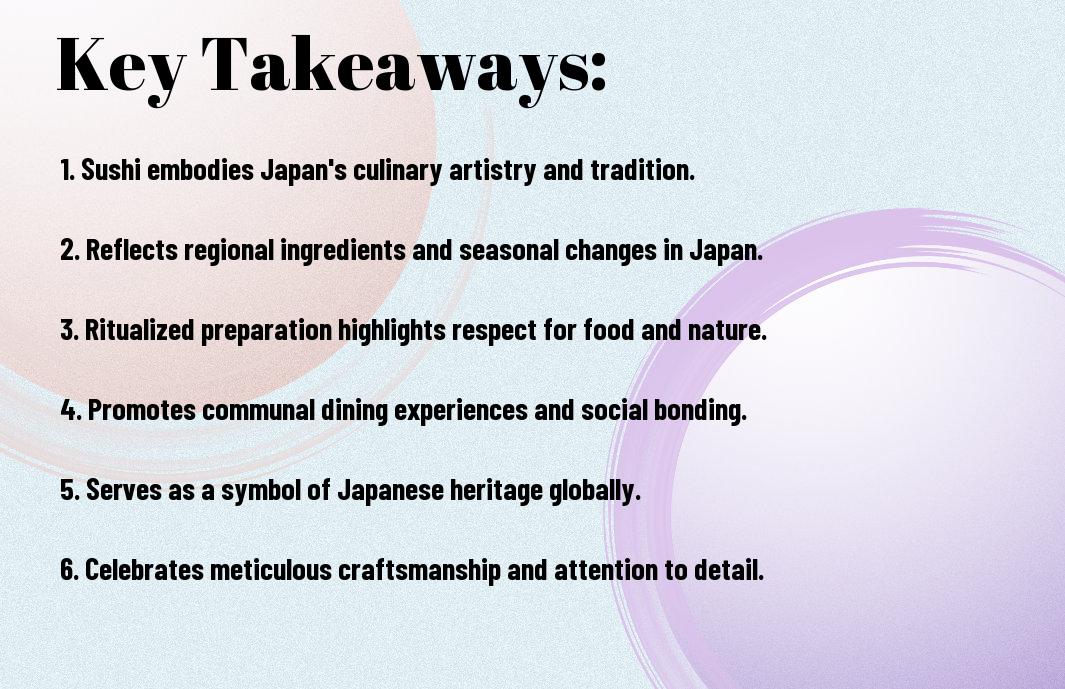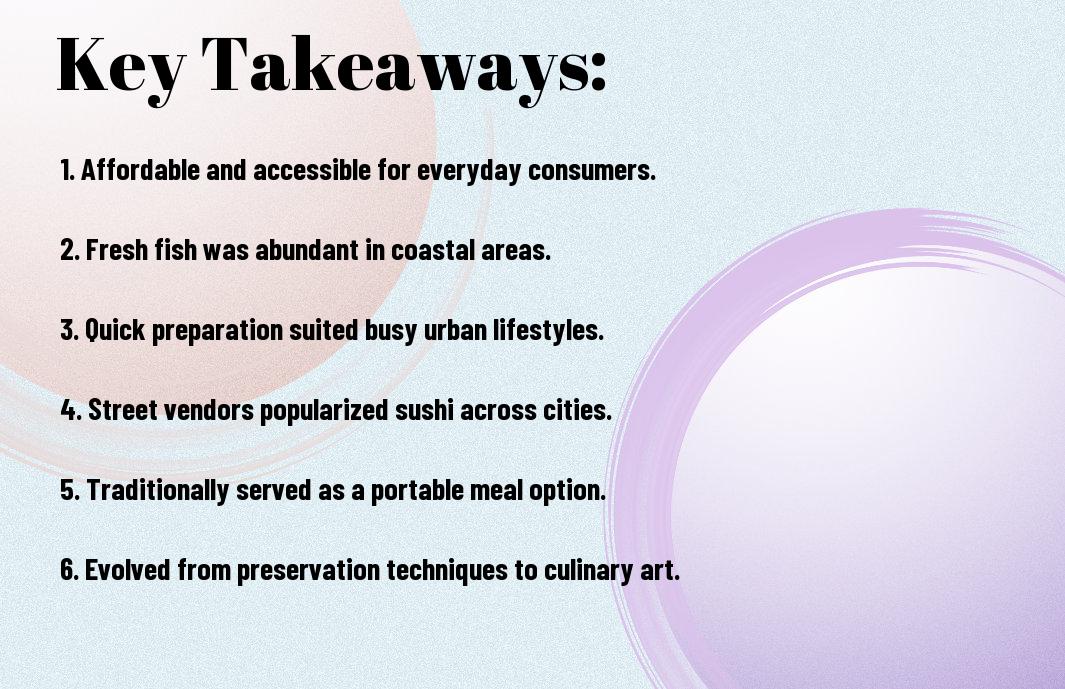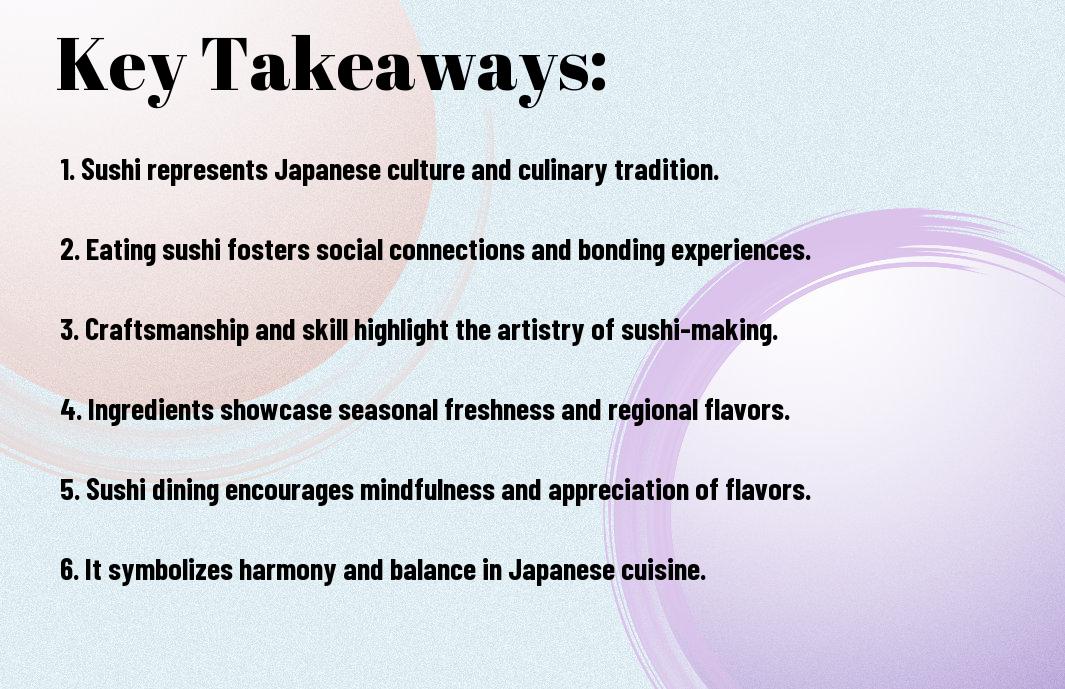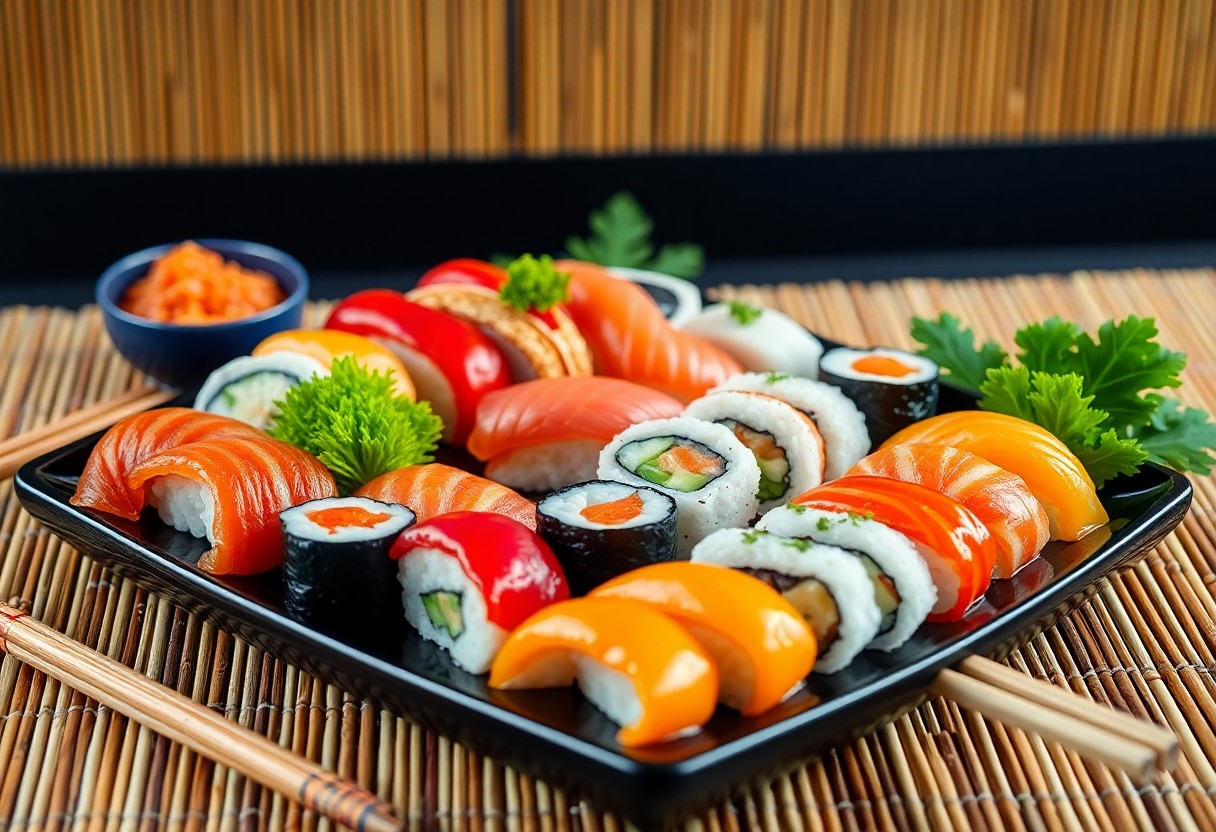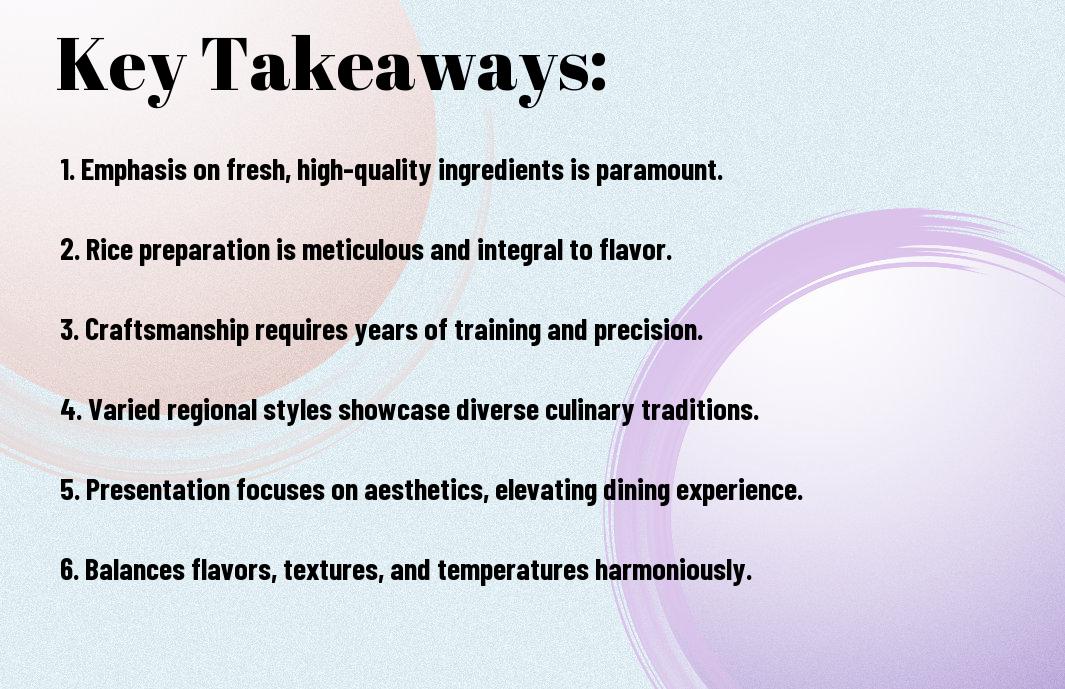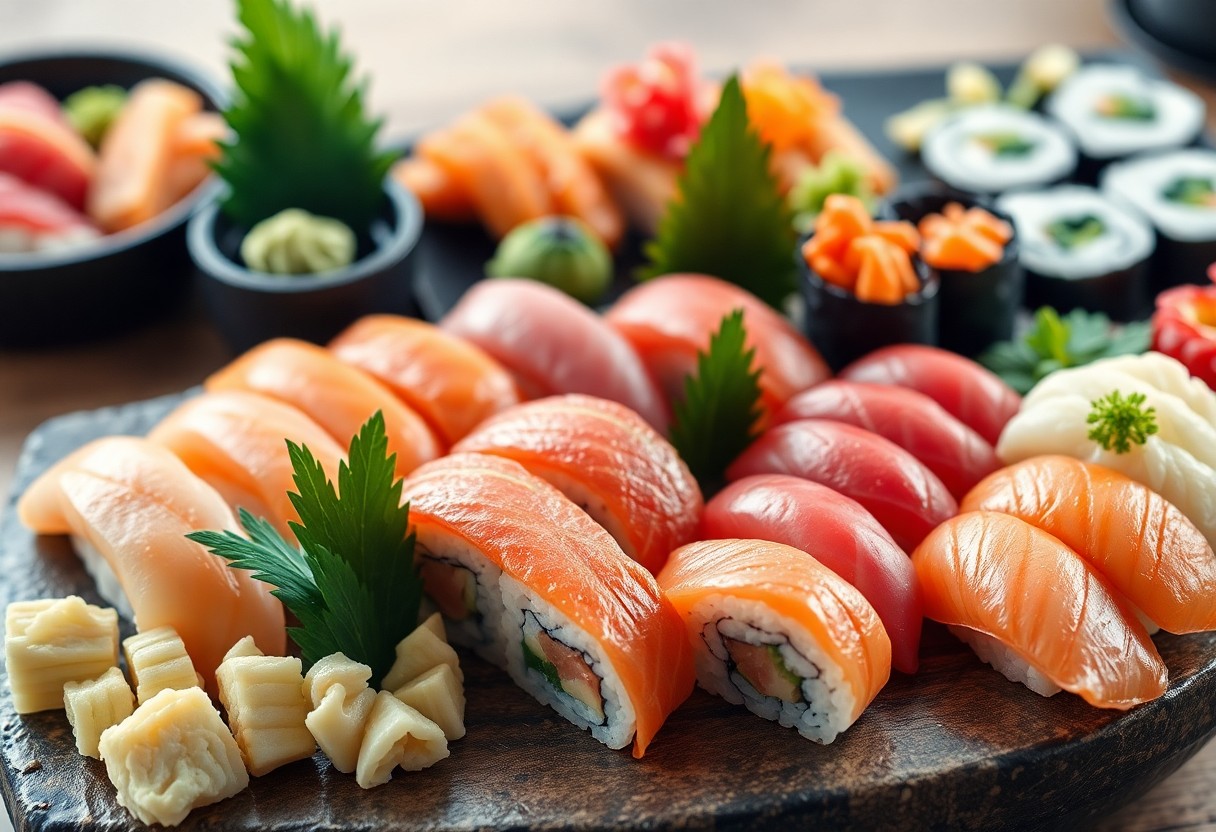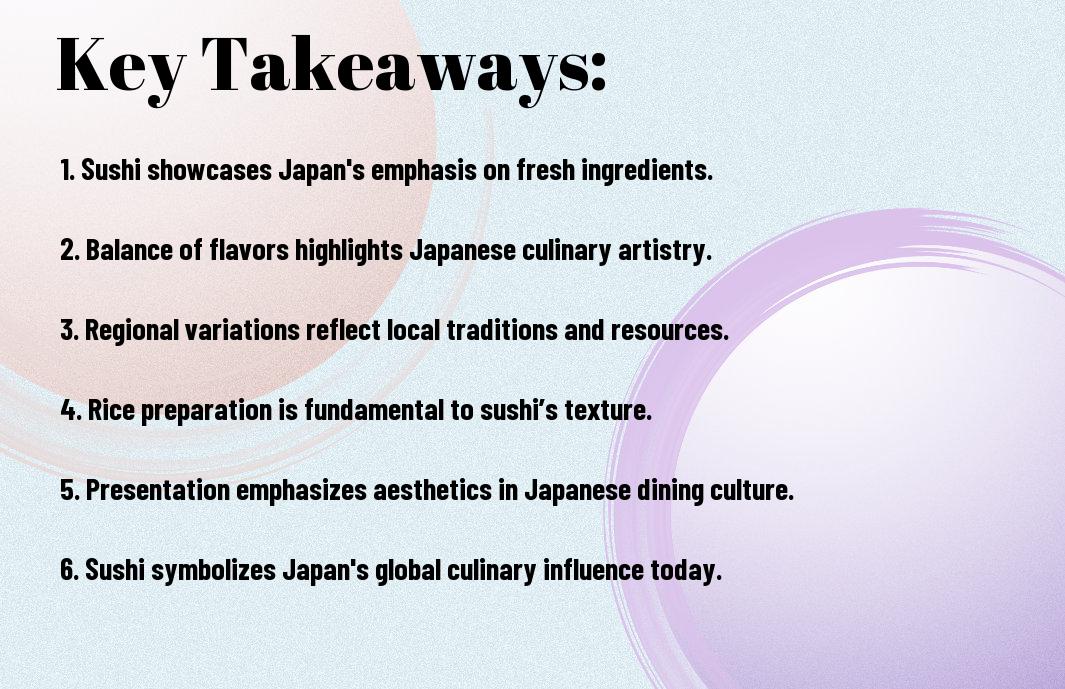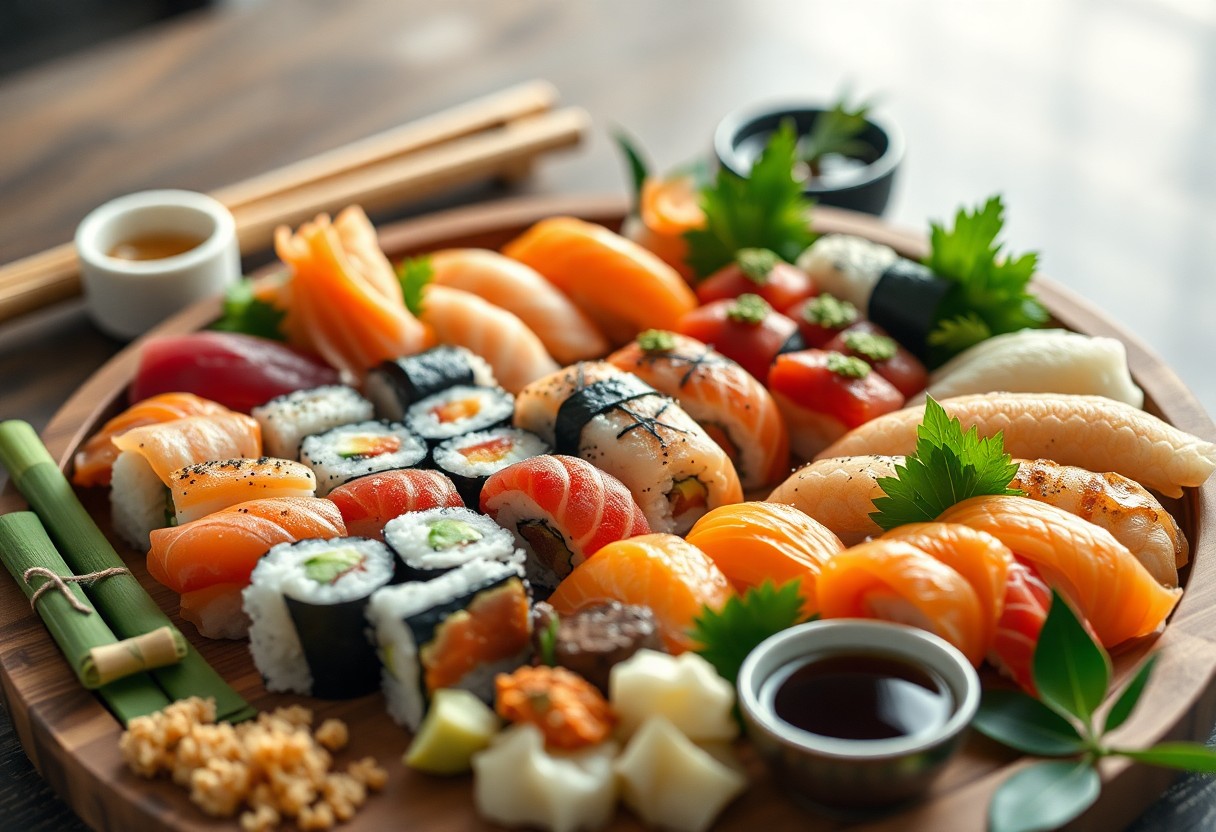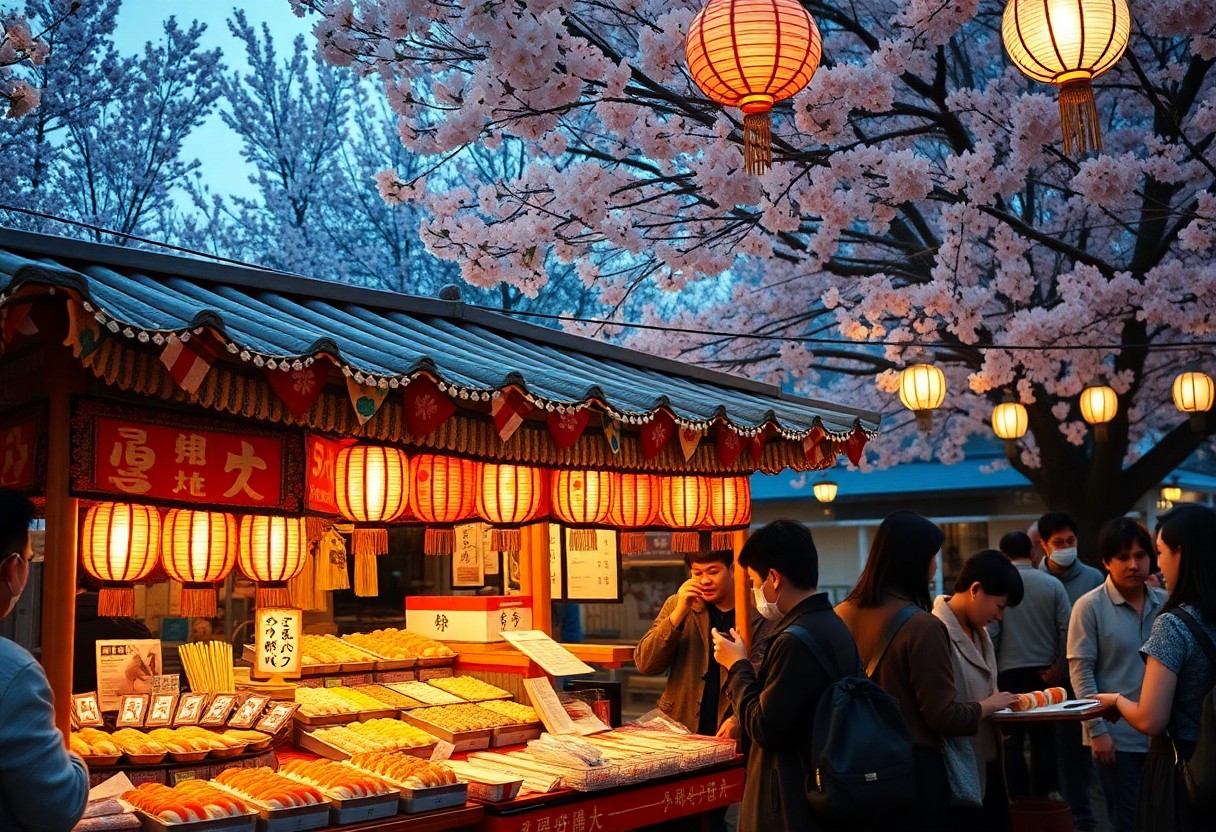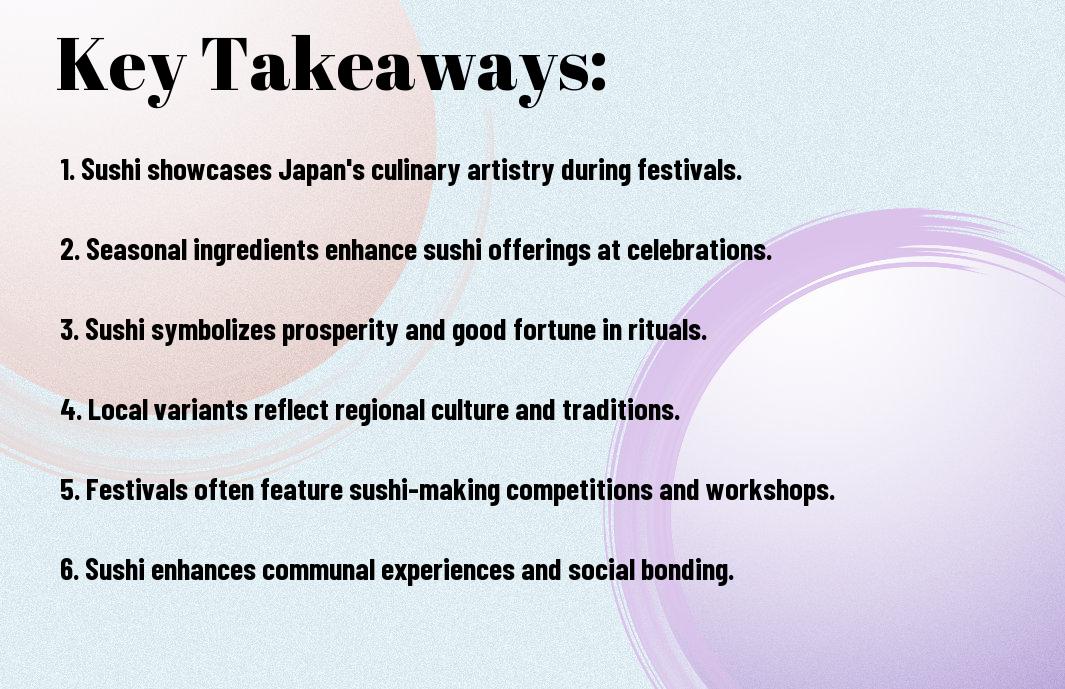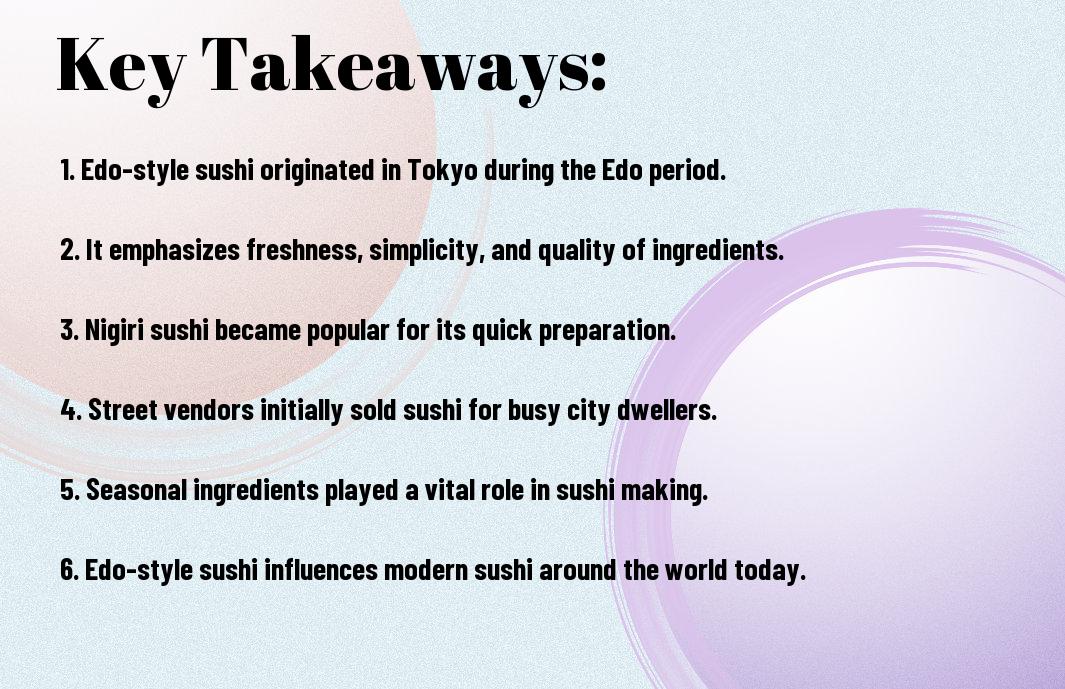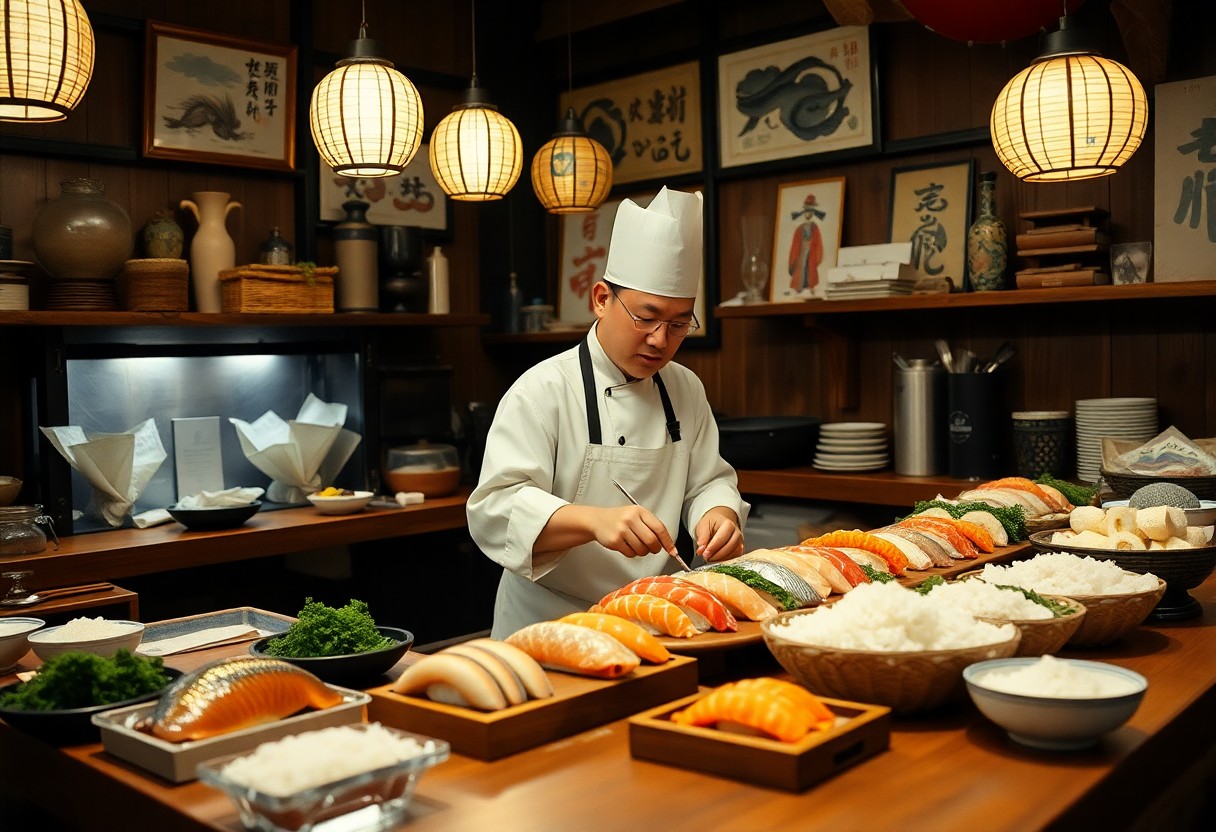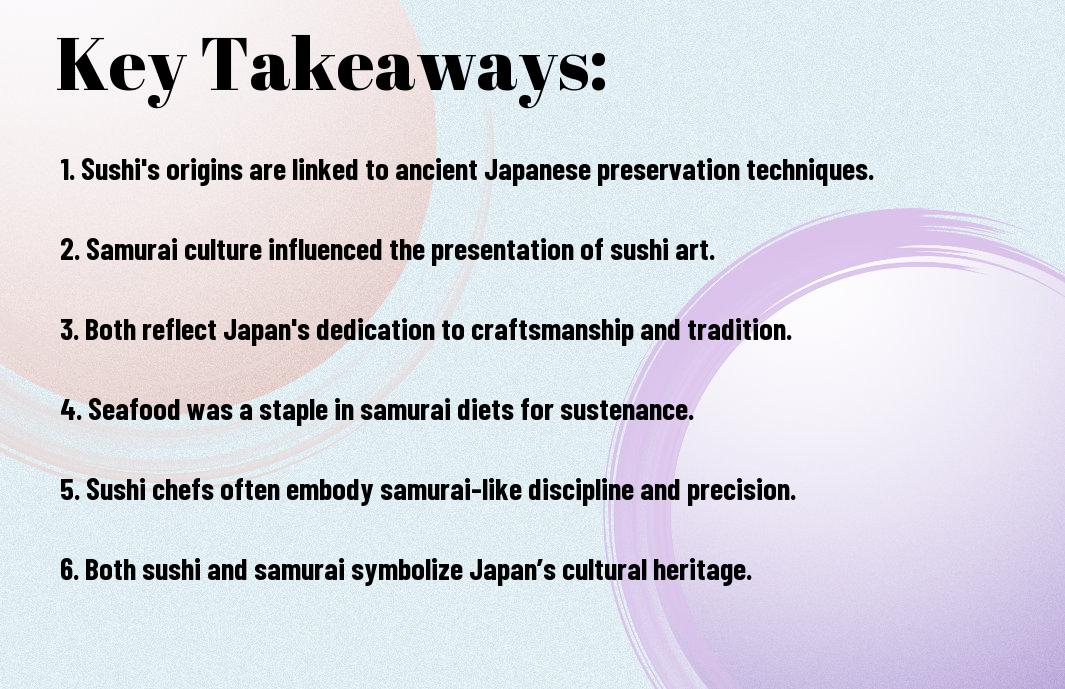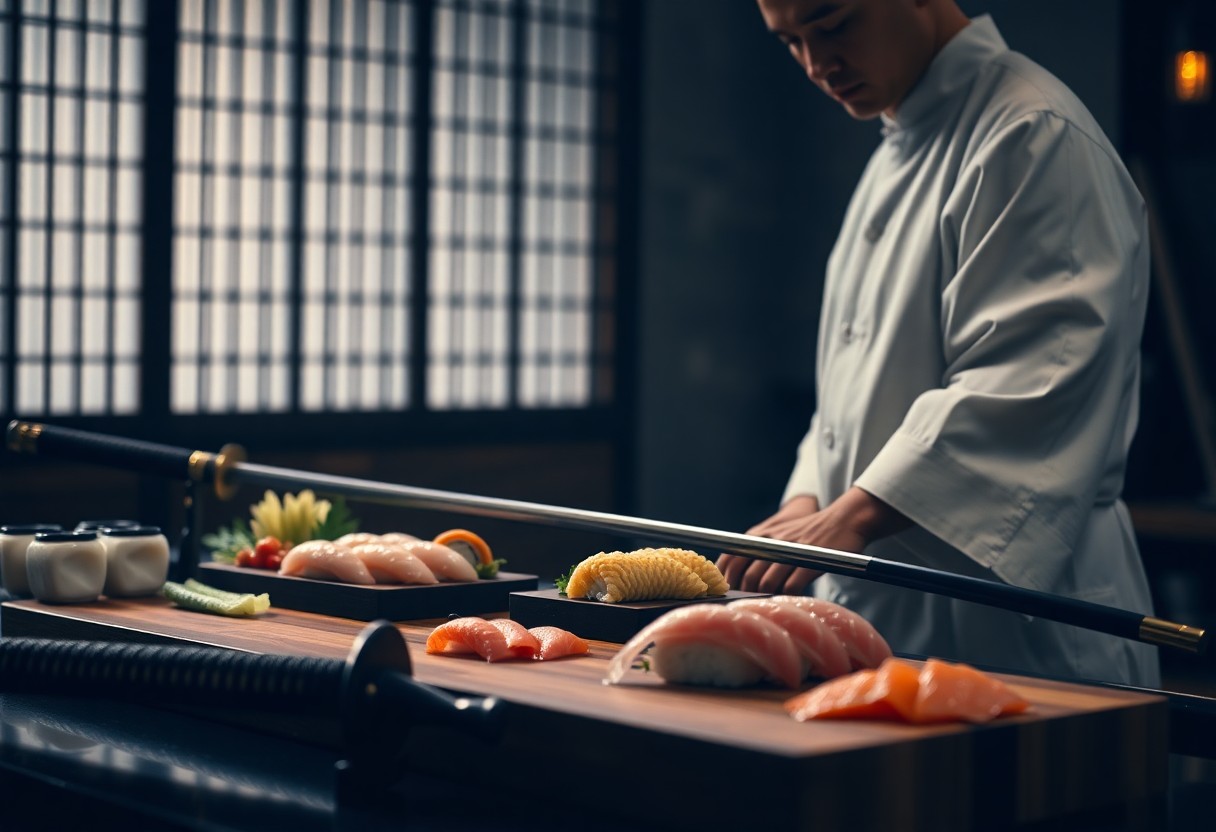There’s a fascinating story behind sushi that spans centuries and continents, evolving from its humble beginnings in ancient Japan to becoming a beloved dish worldwide. As you examine into the history of sushi, you’ll discover how this culinary art form transformed over time, influenced by cultural exchanges and innovation. You’ll learn about the traditional methods of preparation, the significance of ingredients, and how sushi has adapted to global tastes while maintaining its essence. Join us as we explore this delicious journey through time and culture.
Key Takeaways:
- Origins: Sushi has its roots in ancient Japan, evolving from a method of preserving fish through fermentation, known as narezushi.
- Development: Over the centuries, sushi transformed from a preservation technique to a popular dish, integrating vinegared rice and fresh fish.
- Regional Variations: Different styles emerged across Japan, such as nigiri, maki, and temaki, each with unique ingredients and preparation methods.
- Global Expansion: In the 20th century, sushi gained international popularity, adapting to local tastes and giving rise to fusion varieties.
- Cultural Influence: Sushi has become a key part of contemporary dining, reflecting culinary art and a symbol of Japanese culture worldwide.
Ancient Origins of Sushi
The history of sushi traces back to ancient Japan, where it began as a preservation method for fish. Early methods involved fermenting fish with rice to prolong its freshness, leading to the unique culinary art that sushi is today. If you want to understand how this delectable dish evolved, explore The History of Sushi: From Ancient Japan to Global ….
Earliest Forms of Fermented Fish
By utilizing the natural fermentation process, early Japanese cultures discovered that fish could be preserved in rice. This technique not only extended the shelf life of their catch but also enhanced flavor, creating a primitive yet effective method of food preparation. You will find it fascinating how this practice set the foundation for sushi as we know it now.
Development of Narezushi
Forms of fermented fish evolved over time, leading to the creation of narezushi, one of the earliest known types of sushi. This method involved wrapping fish in fermented rice, which acted as a preservative. Utilizing this technique indicated an innovative approach to food conservation and flavor enhancement.
Another key aspect of narezushi was its emphasis on ingredients’ sourcing and preparation. As communities began to experiment with various fish types and rice, the technique gained popularity in coastal regions. This shift contributed to its transformation from a necessity to a celebrated dish, laying the groundwork for the diverse sushi styles enjoyed worldwide today.
Evolution in the Edo Period
Now, the Edo period (1603-1868) marked a transformative era for sushi, shaping it into the beloved dish we enjoy today. With a burgeoning urban population in Edo (modern Tokyo), the demand for quick and convenient food options skyrocketed. As fish markets thrived, sushi became more accessible, leading to a delightful fusion of flavors and techniques that would solidify its place in Japanese culinary tradition.
Birth of Edomae-zushi
One of the most significant developments during this time was the creation of Edomae-zushi, which originated from the fresh seafood caught in Tokyo Bay. Fish was marinated or preserved in vinegar, elevating its flavor and allowing for extended storage. This innovative approach not only highlighted the freshest ingredients but also made sushi a sophisticated and popular dish, setting the stage for its eventual global spread.
Sushi as Street Food
At the same time, sushi was becoming street food, enjoyed by the everyday denizens of Edo. Vendors sold ready-to-eat sushi from stalls, making it a convenient option for those on the go. This accessibility contributed to sushi’s popularity, allowing you to savor this exquisite dish in a bustling, vibrant environment.
Further, these street vendors introduced various styles and toppings that catered to different tastes, creating a lively and competitive atmosphere. Individuals would often grab a quick bite of nigiri or narezushi as they navigated the busy streets, making sushi an imperative part of daily life. The casual nature of this food made it approachable, enabling you to enjoy the art of sushi without the formality of dining in a restaurant. As the Edo period progressed, the evolution of sushi as street food laid the foundation for its integration into modern culinary experiences worldwide.
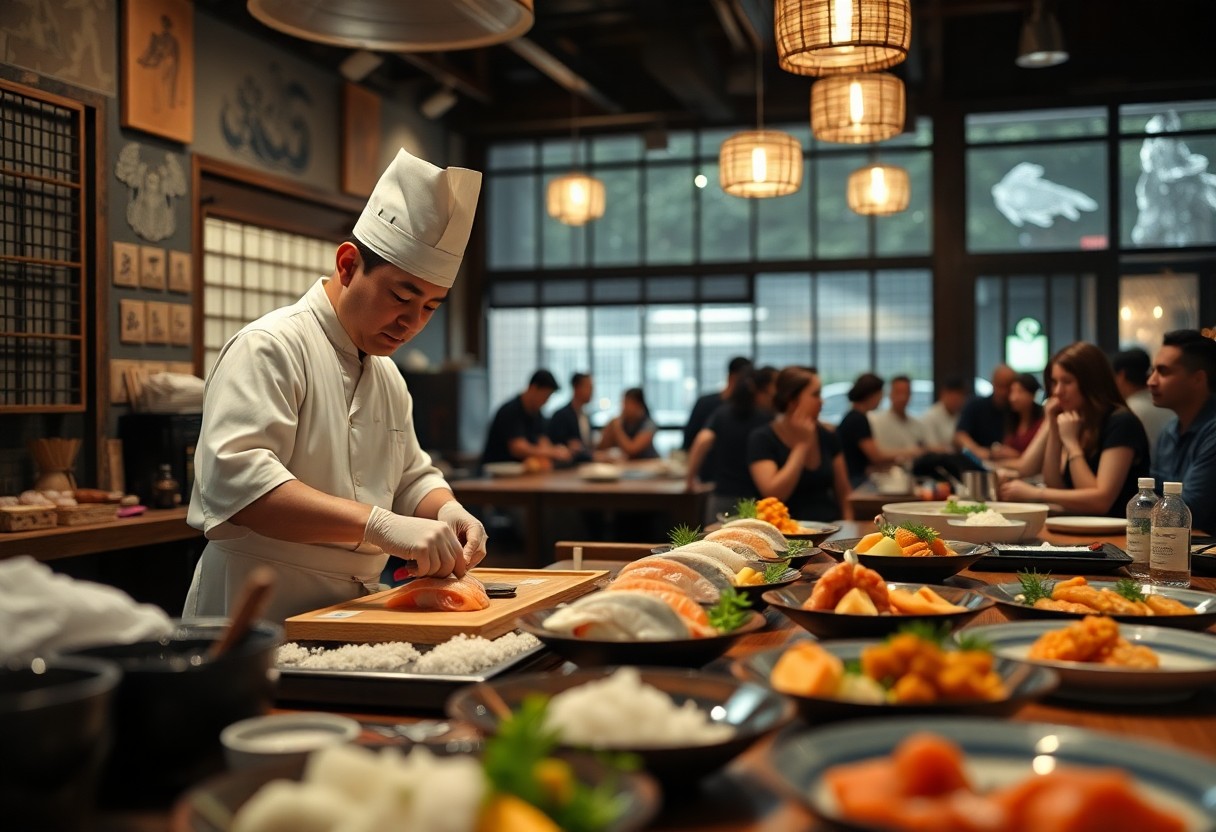
Sushi’s Journey to the West
After making its way from Japan, sushi began to gain popularity in the West, becoming a symbol of Japanese culture and cuisine. This transformation, documented in various historical contexts, is explored in Sushi History: From Ancient Origins to Modern Delights. You will discover how sushi evolved, appealing to diverse palates and gaining recognition beyond its origins.
First Introductions to Western Culture
Across the late 19th and early 20th centuries, sushi began to appear in Western societies, initially introduced by Japanese immigrants. Early encounters with sushi were often met with curiosity and skepticism, but as cultural exchanges grew, so did an appreciation for this unique cuisine.
Establishment of Sushi Restaurants
An important turning point for sushi in the West came with the establishment of sushi restaurants, especially in major cities like Los Angeles and New York during the 1970s and 1980s. These eateries provided authentic experiences, introducing you to traditional sushi varieties and innovative rolls that catered to local tastes.
Further developments in sushi restaurants led to the creation of fusion dishes, blending international flavors with traditional sushi components. As a result, the menu expanded, making it more accessible to a wider audience. You may find yourself enjoying sushi tacos or sushi burritos, reflecting the evolving nature of this beloved dish, showcasing how sushi continues to adapt and thrive in the global culinary landscape.
Modern Variations and Innovations
To appreciate the evolution of sushi, you must explore its modern variations and innovations. Today’s sushi scene is a canvas for countless culinary artists, leading to a fusion of ingredients and techniques from around the world. The traditional sushi experience has expanded, incorporating vibrant flavors and unexpected combinations that cater to diverse palates, while still honoring its rich heritage.
Fusion Sushi and Global Adaptations
An exciting aspect of modern sushi is the rise of fusion sushi, where traditional Japanese elements meld with global flavors and culinary practices. Sushi rolls infused with spicy mayo, avocado, or even tropical fruits have gained popularity, creating unique dishes that resonate with your taste preferences. Furthermore, restaurants around the world adapt sushi to local ingredients, making it accessible and appealing to a broader audience.
Trends in Sushi Presentation and Ingredients
Against the backdrop of traditional styles, today’s sushi chefs prioritize creativity not only in flavor but also in presentation. Innovative plating techniques and the use of vibrant, fresh ingredients enhance your dining experience, elevating sushi to an art form. The emphasis on aesthetics, alongside health-conscious options such as brown rice and plant-based ingredients, reflects a changing consumer mindset.
Modern sushi presentations often reflect an artistic vision, where chefs use colorful garnishes, intricate patterns, and thoughtful arrangements to create stunning plates that are as delightful to the eyes as they are to the palate. This approach, paired with a shift towards information about ingredient sourcing and quality, highlights the importance of not just enjoying a meal, but also acknowledging the story behind it. As you indulge in these contemporary creations, you engage with a global gastronomic journey that celebrates both tradition and innovation.
Cultural Significance of Sushi
Your understanding of sushi goes beyond taste; it’s intertwined with cultural identity and heritage. Originating in Japan, sushi symbolizes the country’s craftsmanship, seasonal ingredients, and respect for the ocean. Traditional sushi embodies meticulous preparation and artistry, capturing the essence of Japanese culture while promoting community through shared experiences. As sushi continues to evolve, its cultural implications remind you of the delicate balance between preservation and innovation.
Sushi in Japanese Tradition
Significance lies in sushi’s deep-rooted connection to Japanese customs and values. It is often served during celebrations and gatherings, serving as a medium for hospitality. Sushi chefs, known as itamae, undergo years of rigorous training, which reflects the culture’s emphasis on mastery and respect for culinary traditions. You can appreciate how sushi not only nourishes the body but also brings people together in celebration.
Global Perspectives on Sushi
Cultural appreciation for sushi has transcended borders, leading to its global popularity. Diverse interpretations have emerged, combining local ingredients and flavors with traditional sushi techniques. This adaptation shows how food can foster cross-cultural exchange, inviting you to explore new culinary landscapes while still respecting its origins.
And as sushi continues to gain international acclaim, it has been embraced in various cuisines, leading to numerous hybrids like California rolls and sushi burritos. This globalization reflects the dish’s adaptability and has created a newfound respect for sushi beyond Japan. You can see how sushi restaurants, food festivals, and cooking classes around the world have made this once-local delicacy a prominent global phenomenon, uniting food lovers with diverse tastes and preferences.
Sushi in Contemporary Society
Once again, sushi has evolved, transcending its traditional roots to become an emblem of global cuisine. In contemporary society, you can find sushi in various forms, including fusion dishes that blend unique flavors and techniques from different cultures. This adaptability has led to an explosion of sushi bars, food trucks, and home kits, making it a staple in many households around the world.
Sushi’s Popularity and Accessibility
Behind sushi’s meteoric rise in popularity lies an increasing accessibility that caters to diverse tastes and preferences. With establishments ranging from high-end sushi restaurants to casual conveyor belt sushi, you can now enjoy this delicacy without compromising your budget. Sushi has become a top choice for special occasions, easy meals, and even healthy dining options.
Sustainability and Ethical Sourcing
On the other hand, as sushi’s demand grows, it’s imperative to address concerns around sustainability and ethical sourcing. You should be informed about the impact of overfishing and the ecological balance that is often disrupted by widespread seafood consumption.
Sourcing sustainable fish and seafood is increasingly relevant in the global sushi market. You can seek out restaurants and brands that prioritize responsibly sourced ingredients, which may include fish from certified fisheries or farmed options that adhere to environmental standards. By opting for sushi made with ethically sourced seafood, you contribute to the protection of marine ecosystems and help ensure that these resources remain available for future generations. Additionally, the rise of plant-based sushi options opens up even more sustainable pathways for enjoying sushi while being mindful of ecological impacts.
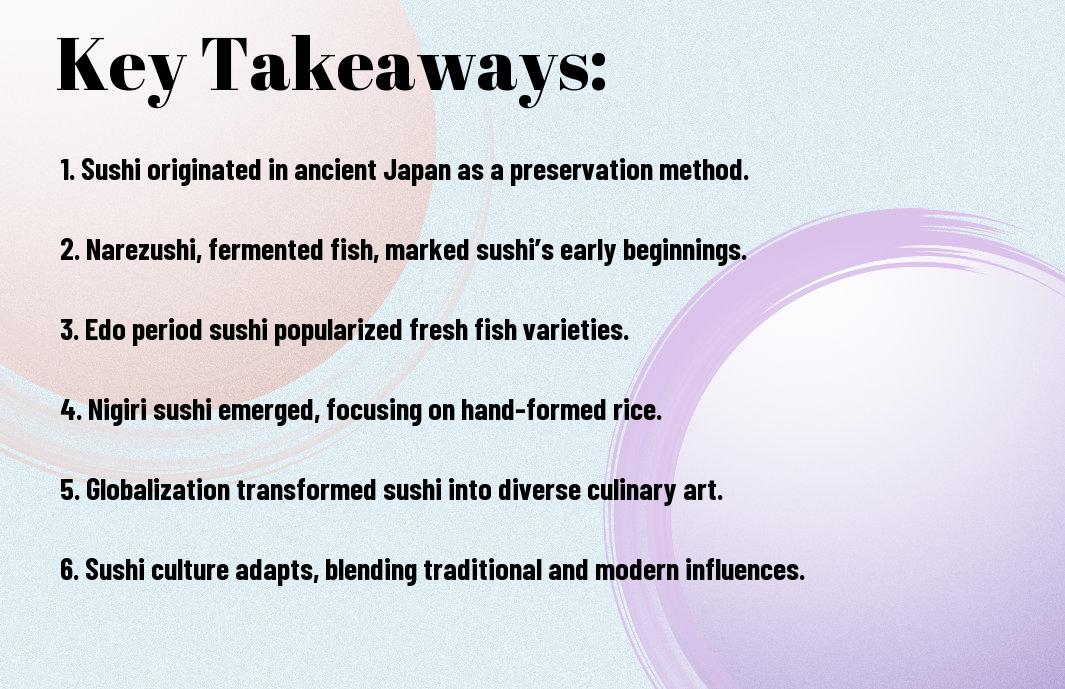
Final Words
Ultimately, understanding the history of sushi enriches your appreciation for this beloved dish. From its origins in ancient Japan as a means of preserving fish to its evolution into a global culinary phenomenon, sushi reflects the cultural exchanges and innovations that have shaped it. As you savor each bite, you participate in a tradition that transcends borders, connecting you to centuries of history and a diverse array of flavors from around the world.
FAQ
Q: What is the origin of sushi and how did it evolve over time?
A: Sushi originated in Southeast Asia as a method of preserving fish in fermented rice. This practice, known as narezushi, involved wrapping the fish in rice to allow it to ferment and the rice would be discarded before consumption. As the concept moved to Japan around the 8th century, it began to change. By the Edo period (1603-1868), sushi evolved into a quicker, more accessible version known as nigiri sushi, where fresh fish is placed on hand-formed rice. This marked the transition from preservation to a culinary art form, leading to the various styles of sushi enjoyed today.
Q: How did sushi gain popularity outside of Japan?
A: Sushi’s popularity beyond Japan can be traced back to the mid-20th century, particularly post-World War II when international culinary influences began to merge. The first sushi bars in the United States opened in the 1960s, attracting curious diners interested in exotic flavors. The introduction of rolls like California rolls, which used accessible ingredients like crab and avocado, helped catapult sushi into mainstream culture. Increasing globalization, international travel, and the rise of Japanese cuisine in Western food culture further fueled sushi’s popularity worldwide.
Q: What variations of sushi exist around the world?
A: While traditional sushi consists of vinegared rice accompanied by various ingredients, many regional variations have emerged globally. In the United States, for instance, sushi rolls have become a creative outlet, leading to the invention of fusion rolls like the rainbow roll or tempura rolls. In Brazil, sushi restaurants often serve items like sushi with tropical fruits or unique sauces that reflect local flavors. Each country has adapted sushi according to local tastes and available ingredients, resulting in a diverse array of styles and preparations that celebrate the original Japanese dish while adding a unique twist.
